Czapp Opinion Focus
Storm Dianmu hit Thailand late in September. This caused severe flooding across the country. The cane has coped well, but cassava producers are rushing to harvest to avoid devastating losses.
Thailand’s Cane Regions Have Coped Well With Storm Dianmu
Storm Dianmu hit Thailand late last month; large parts of the country are as a result flooded
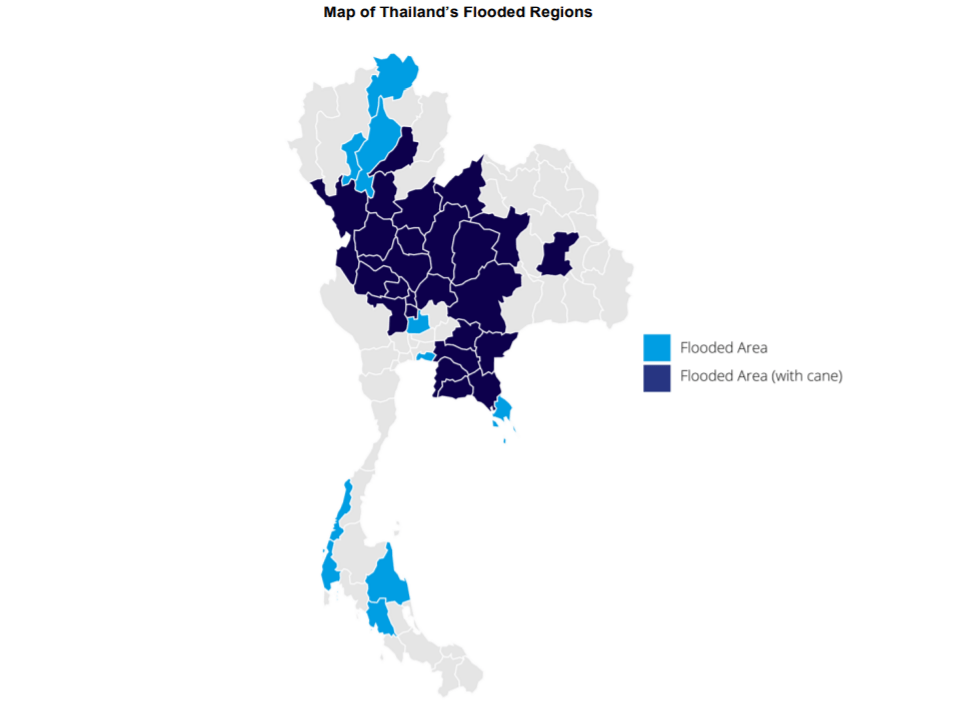
The cane regions haven’t endured severe damage, as it’s well established, making it less vulnerable to such conditions. They are instead benefitting from increased soil moisture following two drought-hit seasons.
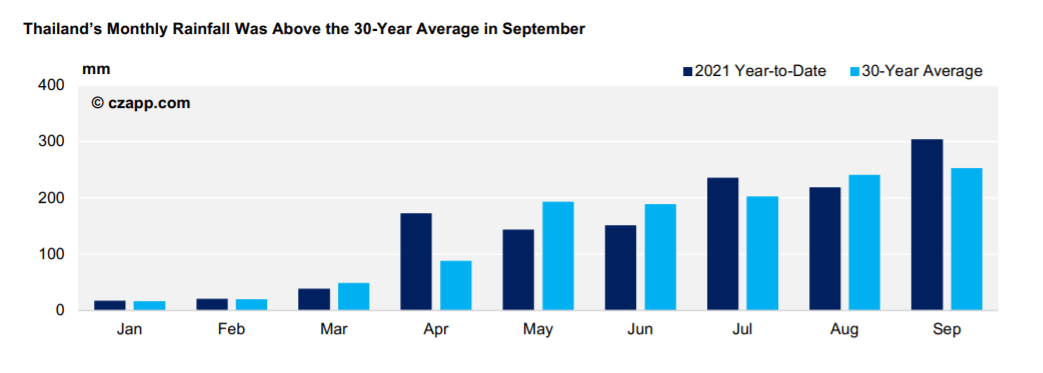
This should mean Thailand produces 93.7m tonnes of cane in 2021/22, up 23 tonnes year-on-year.

Agricultural yields should also improve because of the heavy rains, with our current estimate sat at 11.16 mt/rai, up 10% year on-year.
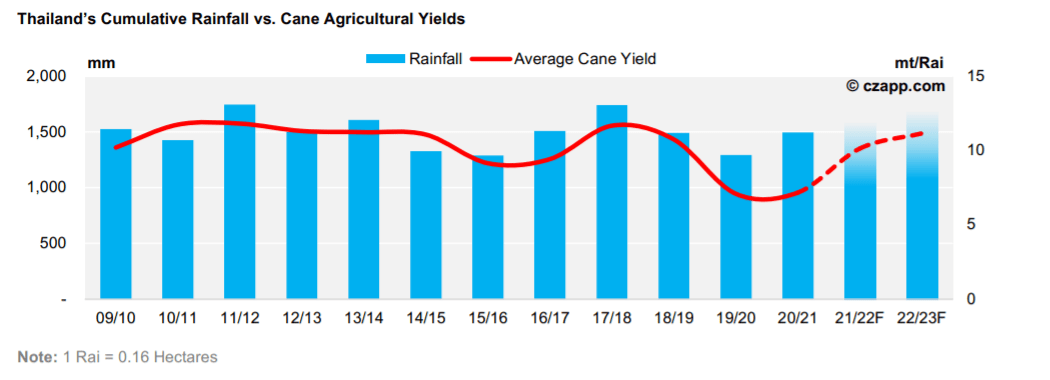
However, if the cane sits in water for too long, the roots will rot, and Thailand’s agricultural yields would weaken. It’s early to discuss Thai cane production 2022/23, with planting yet to commence, but with cane prices sat at 1,000 THB/mt, excluding any additional payments, we should see more farmers plant cane in 2022/23.
Thailand’s Cassava Regions Have Coped Less Well…
Cassava is more temperamental than cane when it comes to flooding. If the crop is submerged under water for any longer than a week, the roots begin to rot, and the crop becomes unsalable.
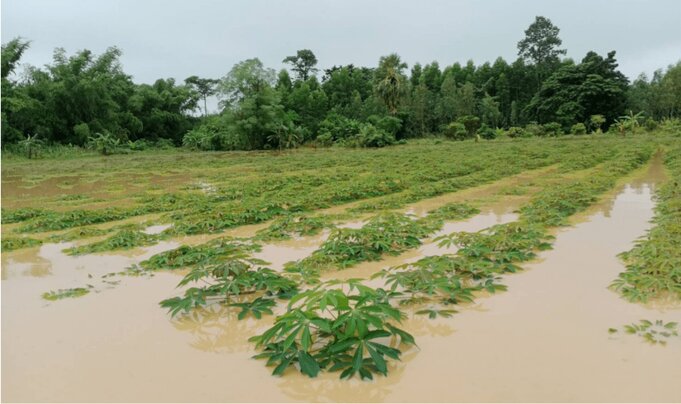
We currently think that around 941k rai of Thailand’s cassava has been damaged by the floods; that’s 10% of this season’s production forecast.
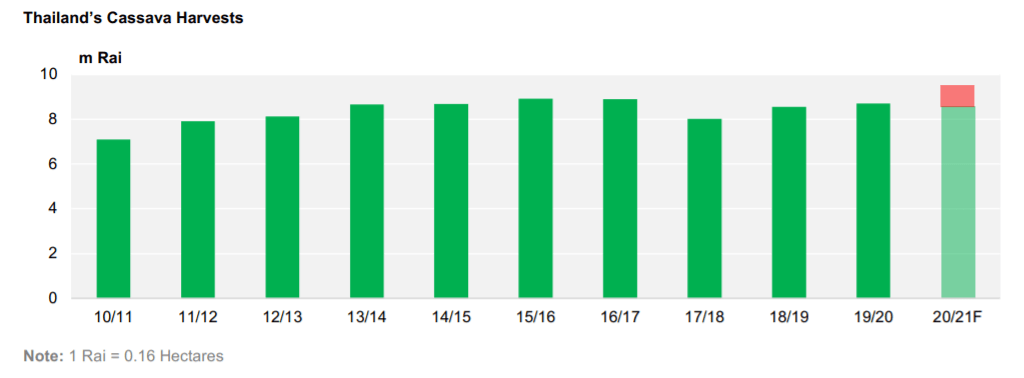
Many have attempted to harvest their cassava, with two more storms heading for Thailand later this month, but it could be too late.
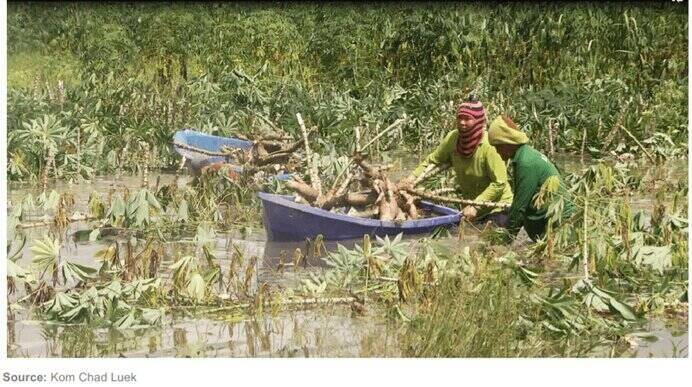
The cassava chip price could hit a record 7,700 THB/mt in 2H’22, with production set to decline alongside strong demand from China.
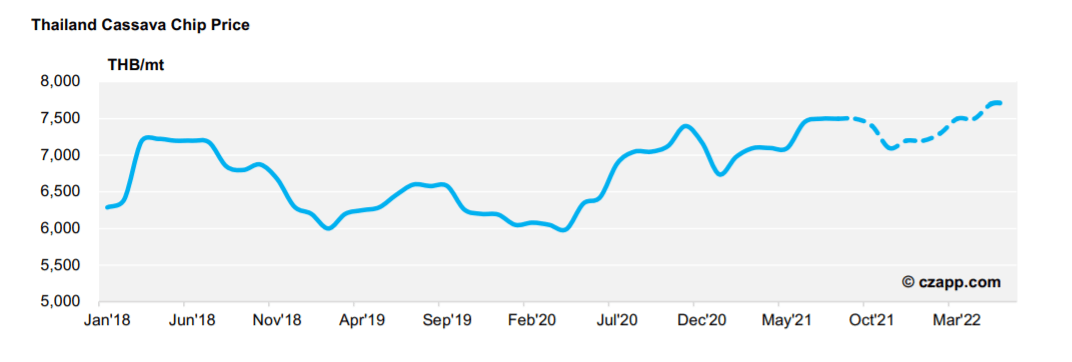
For more articles, insight and price information on all things related related to food and beverages visit Czapp.
To Register for a free account on Czapp click here












